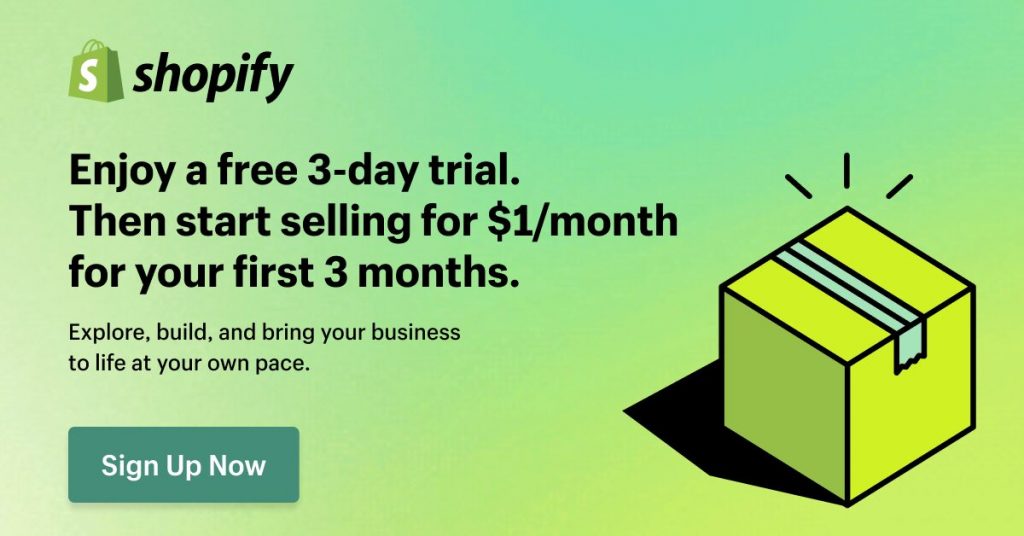How Does Nextdoor Make Money? Nextdoor Business Model Analysis 2025

In an era where social media giants like Facebook and Instagram compete for global attention, Nextdoor has carved out a unique niche by focusing hyperlocally. This neighborhood-based social network connects people within their immediate communities, creating a digital town square where neighbors can share recommendations, report local issues, and build genuine relationships. But the pressing question for investors, marketers, and entrepreneurs remains: how does Nextdoor make money in 2025?
Understanding Nextdoor’s business model offers valuable insights into the evolving landscape of social media monetization, particularly for platforms that prioritize community trust over viral content. As we dive into this comprehensive analysis, you’ll discover not only how Nextdoor generates revenue but also what makes their approach to local social networking both sustainable and profitable.
>> You may also like:
- 10 Apps Like Facebook Marketplace To Sell Locally in 2025
- How Does Craigslist Make Money: Craigslist Business Model Analysis
- How does OfferUp make money? OfferUp Business Model Analysis
What Is Nextdoor?
Nextdoor is a hyperlocal social networking platform that connects neighbors within specific geographic boundaries, typically encompassing a few city blocks or a neighborhood. Founded in 2010, the platform addresses a fundamental need in our increasingly digital world: fostering genuine community connections among people who live near each other.
Unlike traditional social media platforms that encourage users to connect with friends, family, and strangers worldwide, Nextdoor deliberately limits interactions to verified neighbors within a defined local area. This geographic constraint creates a unique social dynamic where users discuss local issues, share safety concerns, recommend businesses, and organize community events.
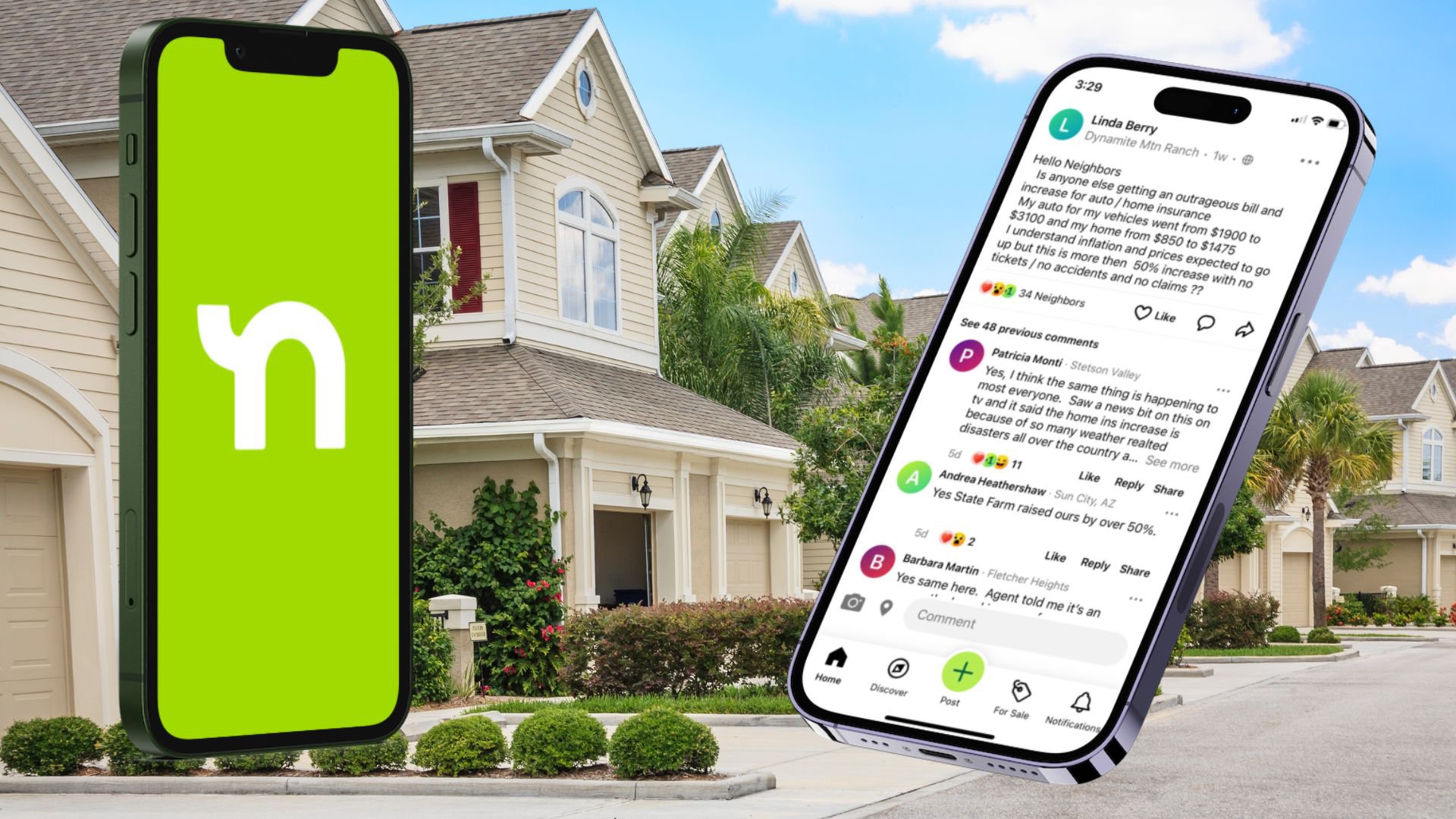
Overview & History
Nextdoor’s journey from startup to public company reflects the growing demand for authentic, local digital experiences:
- 2010: Founded by Nirav Tolia, Sarah Leary, Prakash Janakiraman, and David Wiesen in San Francisco
- 2011: Launched beta version in select neighborhoods
- 2012: Secured $18.6 million Series A funding led by Benchmark Capital
- 2014: Expanded internationally to the Netherlands and United Kingdom
- 2017: Reached 160,000+ neighborhoods across 11 countries
- 2019: Achieved unicorn status with $170 million Series F funding
- 2021: Went public via SPAC merger with Khosla Ventures Acquisition Co. II
- 2025: Operating in over 300,000 neighborhoods across 11 countries with 60+ million users
The platform’s evolution demonstrates a strategic focus on quality community building over rapid user acquisition, which directly influences how Nextdoor makes money through trusted local connections.
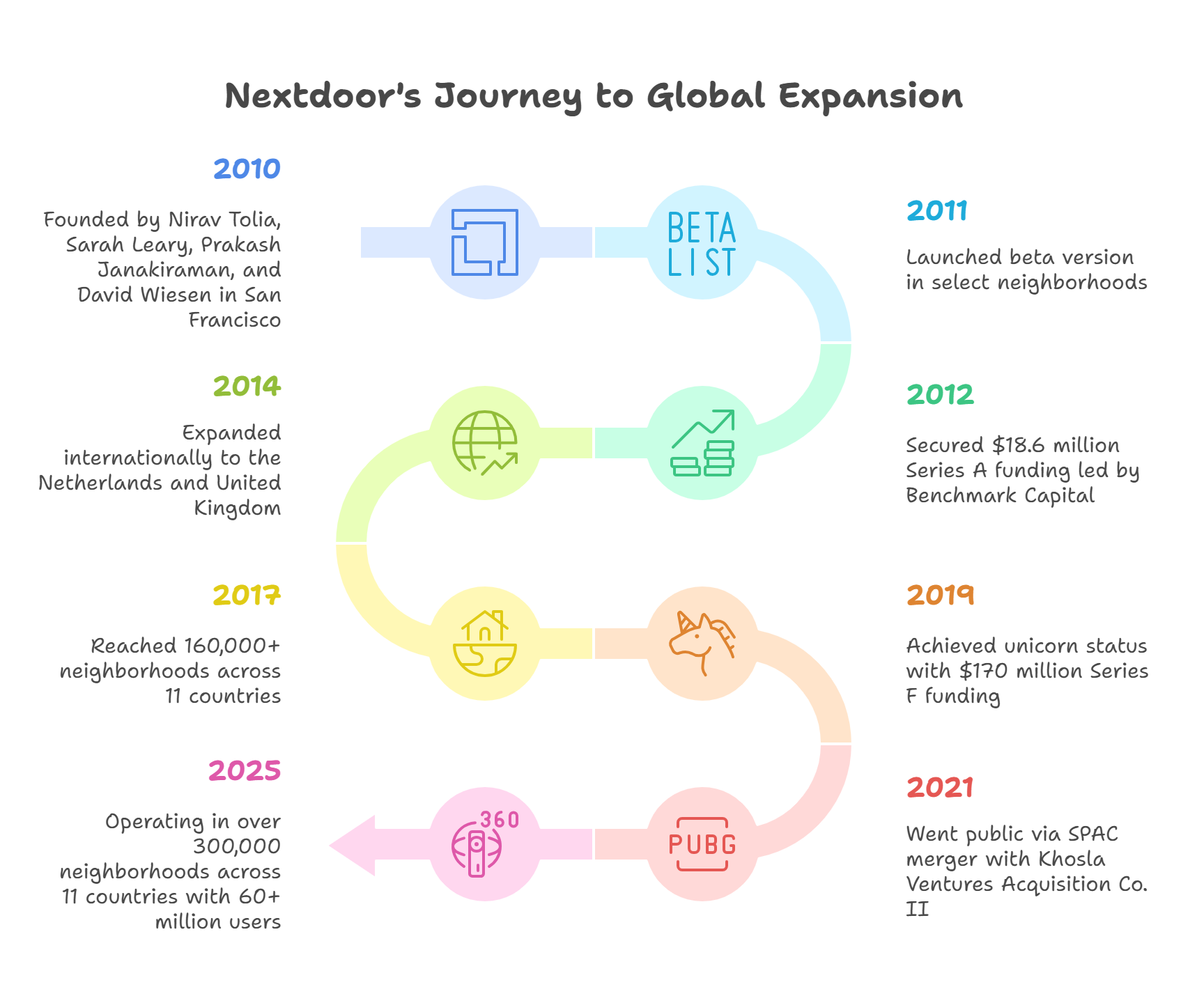
Who Uses Nextdoor?
Nextdoor serves three primary user groups, each bringing distinct value to the platform’s monetization strategy:
Individual Neighbors: The core user base consists of homeowners, renters, and residents who use the platform to stay informed about local happenings, seek recommendations, and connect with neighbors. These users represent approximately 85% of the platform’s active base, with demographics skewing toward homeowners aged 35-65 with household incomes above $50,000.
Local Businesses: Small and medium-sized businesses leverage Nextdoor to reach nearby customers through organic posts, recommendations, and paid advertising. This segment includes restaurants, home service providers, retail stores, and professional services seeking hyperlocal market penetration.
Public Agencies: Government departments, police departments, fire stations, and municipal services use Nextdoor to communicate directly with residents about safety alerts, public meetings, road closures, and community programs.
How Does Nextdoor Work?
Understanding how Nextdoor makes money requires first grasping how the platform operates. Nextdoor’s unique functionality centers around verified identity and geographic boundaries, creating a trusted environment that enables effective monetization.
Users must verify their address through various methods including postcard verification, phone number confirmation, or neighbor vouching. This real-identity requirement builds trust and reduces spam, making the platform more valuable for businesses seeking genuine customer engagement.
The platform organizes users into “neighborhoods” based on geographic boundaries, typically encompassing 1,000 to 5,000 households. These boundaries are carefully mapped to reflect actual community lines, school districts, or natural geographic divisions.
Core Platform Features
Nextdoor’s feature set supports both community building and revenue generation:
- Neighborhood Feed: A localized news feed where neighbors share updates, ask questions, and discuss local issues
- Recommendations: A dedicated space for business reviews and referrals, driving word-of-mouth marketing
- For Sale & Free: A neighborhood marketplace for buying, selling, and giving away items locally
- Groups: Interest-based or purpose-driven community groups within neighborhoods
- Events: Local event creation and promotion tools
- Safety Alerts: Crime and safety reporting features often integrated with local law enforcement
- Business Pages: Professional profiles for local businesses with customer review capabilities
User Experience & Trust Building
Nextdoor’s monetization success stems from its emphasis on trust and community standards:
- Identity Verification: Real-name policy with address verification creates accountability
- Good Neighbor Pledge: Community guidelines promoting respectful, helpful interactions
- Moderation Tools: Neighbor-led moderation with platform oversight reduces toxic content
- Privacy Controls: Users can control who sees their posts and personal information within their neighborhood network
This trust-first approach differentiates Nextdoor from other social platforms and creates a premium environment where businesses can engage authentically with potential customers.
Nextdoor’s Revenue Model – How does Nextdoor make money?
So, how does Nextdoor make money? The company operates a diversified revenue model centered around local advertising and business services, capitalizing on the platform’s unique position as a trusted neighborhood communication hub.
Nextdoor’s revenue strategy leverages three key advantages: verified user identity, hyperlocal targeting capabilities, and high community trust levels. These factors enable the platform to charge premium rates for advertising while delivering measurable results for local businesses.
Primary Revenue Streams
Local Advertising
Nextdoor’s advertising platform represents approximately 80% of total revenue, offering several formats designed for local businesses:
- Sponsored Posts: Native advertising that appears in neighborhood feeds, priced on a cost-per-click (CPC) model starting at $0.50-$2.00 per click
- Business Promotions: Enhanced business profile visibility with promotional badges and priority placement in recommendation results
- Event Sponsorships: Paid promotion of local events with neighborhood-wide visibility
- Recommendation Ads: Targeted advertising within the recommendations section when users search for specific services
Neighborhood Sponsorships
This premium advertising tier allows larger businesses and organizations to sponsor entire neighborhoods or groups of neighborhoods:
- Municipal Partnerships: Government agencies pay for enhanced communication tools and emergency alert capabilities
- Corporate Sponsorships: National brands with local presence sponsor neighborhood activities or safety programs
- Real Estate Integration: Partnerships with real estate platforms for neighborhood insights and property promotions
Local Deals Platform
Nextdoor’s deals platform connects businesses with nearby customers through exclusive offers:
- Deal Creation Tools: Businesses pay setup fees ($50-$200) plus commission on redeemed offers (5-15%)
- Featured Deal Placement: Premium positioning in deals sections for additional fees
- Performance Analytics: Detailed reporting tools help businesses optimize their local marketing strategies
Secondary/Emerging Revenue Streams
As Nextdoor evolves, the company is developing additional monetization channels:
- Premium Business Tools: Advanced analytics, customer relationship management features, and enhanced posting capabilities for professional users
- Data Insights Services: Anonymized neighborhood trend data for market research (launching in select markets)
- Lead Generation: Connecting service providers with neighbors seeking specific services through sophisticated matching algorithms
- E-commerce Integration: Taking commission on transactions that occur through the platform’s marketplace features
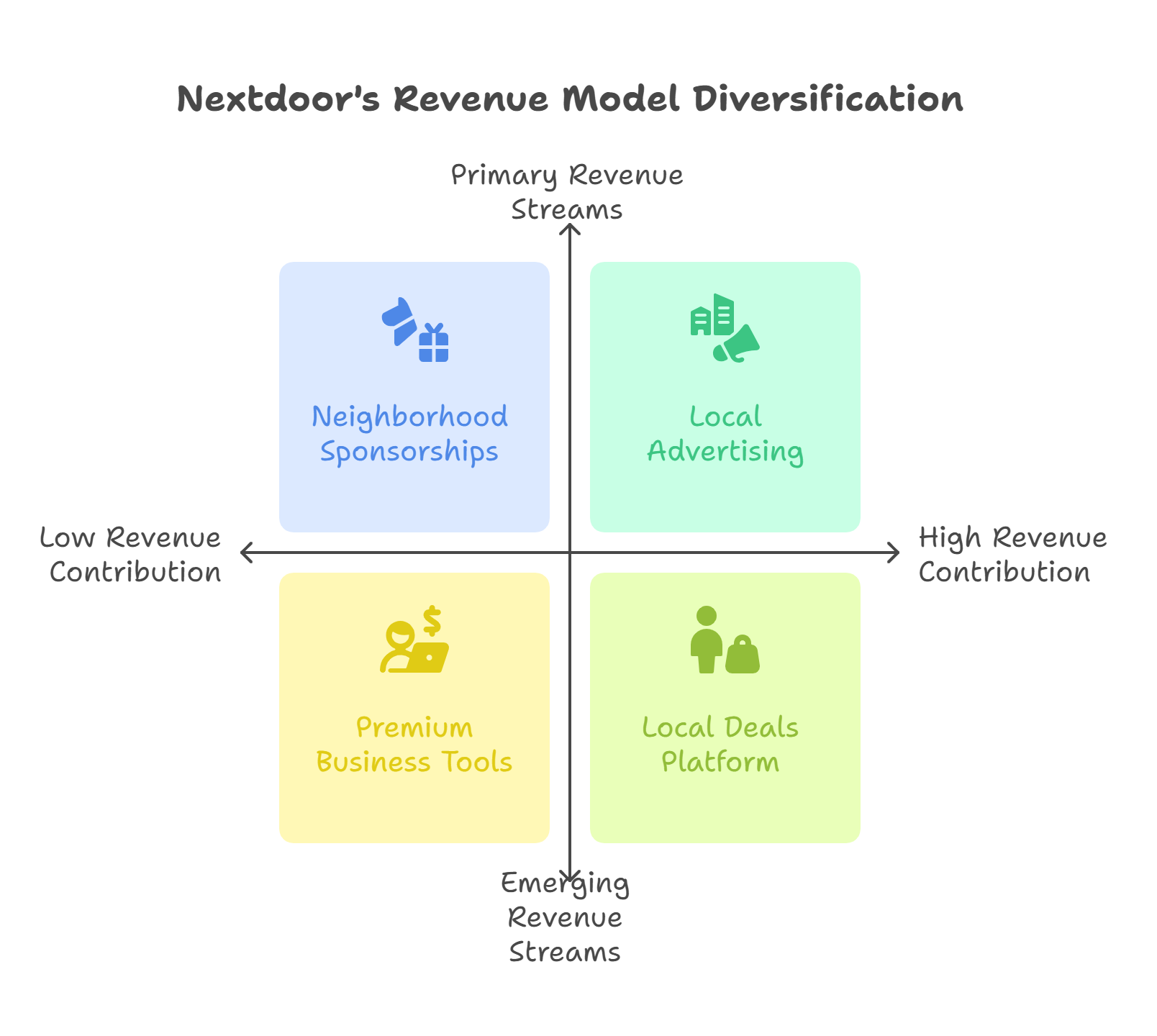
What Makes Nextdoor’s Business Model Unique?
Nextdoor’s approach to monetization differs significantly from traditional social media platforms, creating both opportunities and challenges for how the company makes money.
Local Focus vs. Traditional Social Platforms
| Feature | Nextdoor | ||
| Geographic Scope | Hyperlocal (neighborhood) | Global | Global |
| User Verification | Address required | Optional | Optional |
| Advertising Targeting | Neighborhood-level | Interest/behavior-based | Visual/lifestyle-based |
| Content Focus | Local issues & recommendations | Personal sharing & news | Visual content & lifestyle |
| Monetization Strategy | Local business advertising | Global advertising & data monetization | Influencer marketing & ads |
This hyperlocal focus enables Nextdoor to charge premium rates for advertising because businesses know their ads reach verified neighbors who can actually visit their physical locations.
Hyperlocal Engagement and Value Creation
Value to Neighbors:
- Access to trusted local recommendations and safety information
- Direct communication with local businesses and public agencies
- Community building and social connection opportunities
Value to Businesses:
- Highly targeted local customer acquisition
- Authentic customer testimonials and word-of-mouth marketing
- Direct customer communication and feedback channels
Value to Public Agencies:
- Efficient community communication during emergencies
- Increased civic engagement and public meeting attendance
- Real-time community feedback on public services
Nextdoor Business Model Canvas (2025)
| Component | Description |
| Key Partners | Local businesses, real estate agents, public safety agencies, municipal governments |
| Key Activities | Platform development, community moderation, local business onboarding, safety feature maintenance |
| Key Resources | Verified user database, neighborhood mapping technology, trust and safety systems, local business relationships |
| Value Propositions | Trusted neighbor connections, hyperlocal business discovery, community safety information, authentic recommendations |
| Customer Relationships | Community-driven support, business account management, automated onboarding, neighbor moderation |
| Channels | Mobile app, web platform, business development team, community partnerships |
| Customer Segments | Individual neighbors, local businesses, public agencies, real estate professionals |
| Cost Structure | Technology development, community moderation, sales and marketing, regulatory compliance |
| Revenue Streams | Local advertising, business subscriptions, deals platform commissions, premium features |
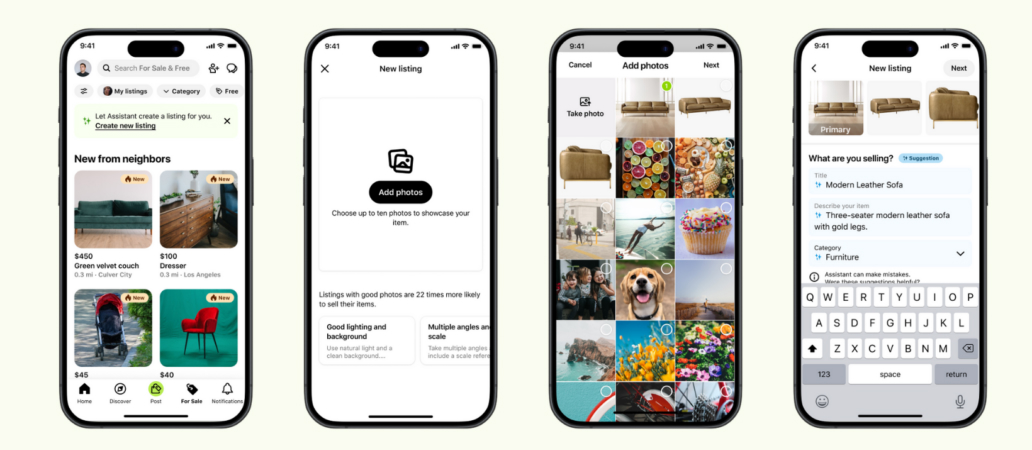
SWOT Analysis of Nextdoor (2025)
| Strengths | Weaknesses |
|
|
| Opportunities | Threats |
|
|
FAQs About How Nextdoor Makes Money
How does Nextdoor protect user privacy compared to other social networks?
Nextdoor limits data sharing to verified neighbors within geographic boundaries and doesn’t sell personal information to third-party advertisers, focusing instead on local business advertising within the platform.
What types of businesses see best ROI on Nextdoor?
Home services, restaurants, fitness studios, and retail businesses with physical locations typically achieve the highest return on investment due to the platform’s hyperlocal targeting capabilities.
Are there costs for ordinary users or small businesses to join?
Basic Nextdoor membership is free for individual users, while businesses can create free profiles and pay only for premium advertising features and sponsored content.
How can local businesses set up ads on Nextdoor?
Businesses can create accounts through Nextdoor’s business portal, verify their location, and launch advertising campaigns with minimum budgets starting at $50 per month.
How does Nextdoor’s monetization compare to local marketing alternatives?
Nextdoor typically costs 40-60% less than traditional local advertising methods like radio or print while delivering higher engagement rates and measurable foot traffic increases.
How are AI and data tools changing Nextdoor’s future monetization?
AI-powered recommendation engines are improving ad targeting accuracy, while anonymized neighborhood trend data creates new revenue opportunities through market research services.
Understanding how does Nextdoor make money in 2025 reveals a sophisticated approach to monetizing authentic community connections. By prioritizing trust, local relevance, and genuine value creation for all stakeholders, Nextdoor has built a sustainable business model that benefits neighbors, local businesses, and public agencies alike. For entrepreneurs and marketers, Nextdoor’s success demonstrates the power of hyperlocal focus in an increasingly digital world, offering valuable lessons for building community-driven platforms that generate both social and economic value.

